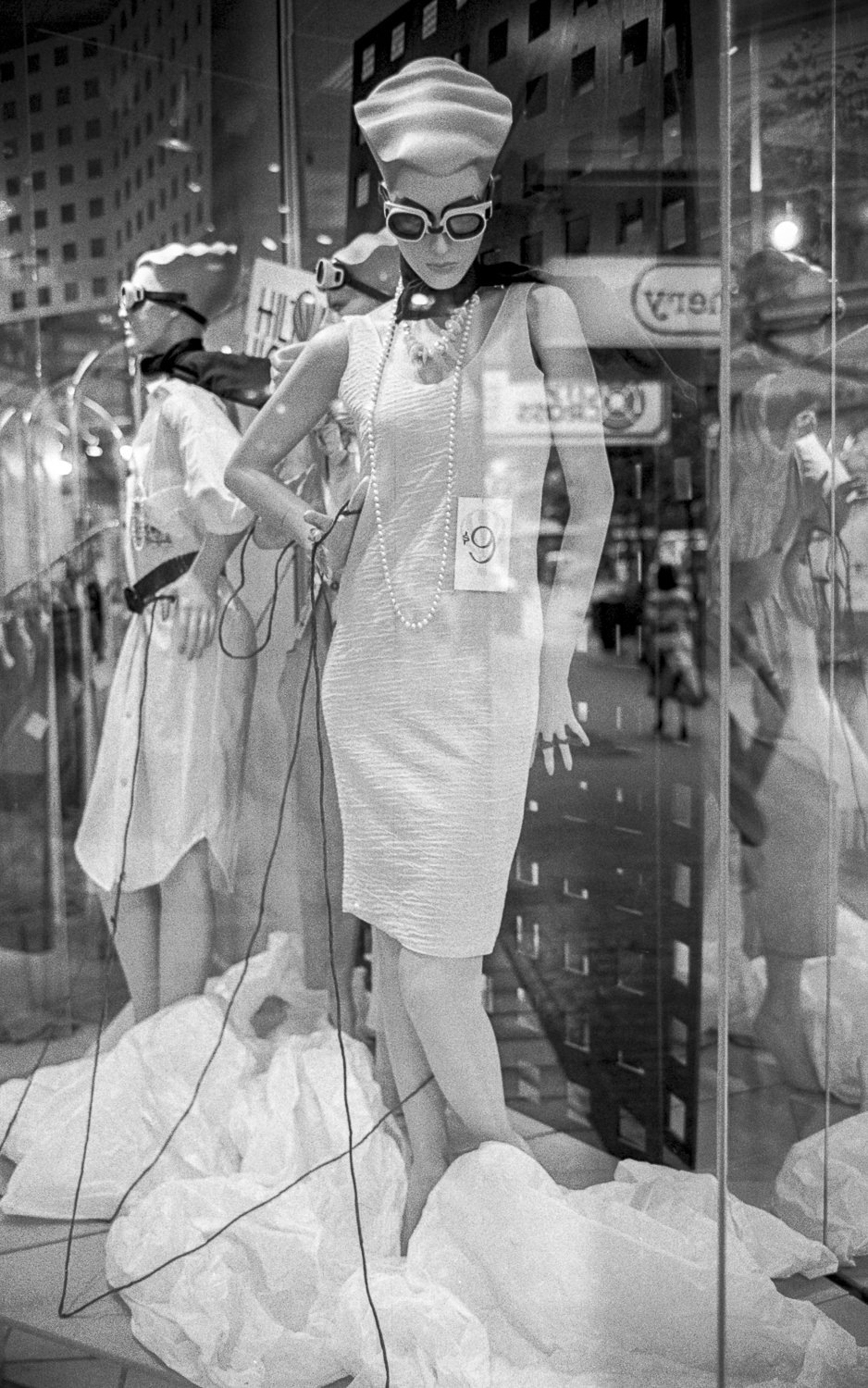I’d seen some of Eugene Agtet’s photos of shop windows in Paris that were picked up by the Surrealists, and I was reading about the society of the spectacle –the image-saturated, comprehensively mediated way of life of consumer capitalism. This spectacular culture of consumer capitalism was shaped by advertising, media, fashion shows, sport and shop windows.

The naive realism of the social documentary associated with my time on the Melbourne trams had given way to an interest with the reproducible representations in popular culture, and the idea of détournement–that is, a plagiarism, an appropriation, a hijacking, a copy, a detour.
A detour as these photos were an image fragment torn away from their conditions of production, from its own movement, and ultimately from the overall frame of reference of its period.

The early 1980s were a time when postmodernists like Meaghan Morris and Paul Foss were arguing that there is no one Australia, and that it was more accurate to view Australia, its culture and art, as a compilation, or a collage culture, of borrowed fragments, stray reproductions and alienated memories. This is what we have to begin with and to go from there by sticking the bits together through improvisation.
The popist postmodernism of Art & Text relocated visual art inside the field of mass cultural production and placed mass culture, fashion music and architecture firmly within the horizon of contemporary art. Art and Text denied art any special, paradigmatic status, relegating it to one sign system amongst many. Foss, Morris and Taylor constructed a theoretical framework that supported an art practice that absorbed and processed existing images, producing new but unoriginal works; one in which photography’s peripheral position in relation to mainstream art practice changes to one of increasing importance.
35mm street photography, by its very nature is fragmentary and engaged in decontextualisation —pieces of a broken mirror of urban life–which are then configured into a relation between the fragments. The photographer rather than being a visionary or genius becomes a ‘mixer’ or tinkerer, who combined fragments of aesthetic forms and mass cultural signs.
References
Meaghan Morris and Anne Freadman, ‘Import Rhetoric: Semiotics in/and Australia’ in Peter Botsman, Chris Burns and Peter Hutchings (eds), The Foreign Bodies Papers, Sydney: Local Consumption Publications, 1981, pp. 122–153.
Paul Foss, ‘Theatrum Nondum Cognitorum’ in Peter Botsman, Chris Burns and Peter Hutchings (eds), The Foreign Bodies Papers, Sydney: Local Consumption Publications, 1981, pp. 15–38.
One Response
Melbourne: social documentary – The Bowden Archive and Other Marginalia
[…] street photos from the late 1970s and the early 1980s have appeared on a couple of blog posts–here and here. The one below is from the same It appears that […]